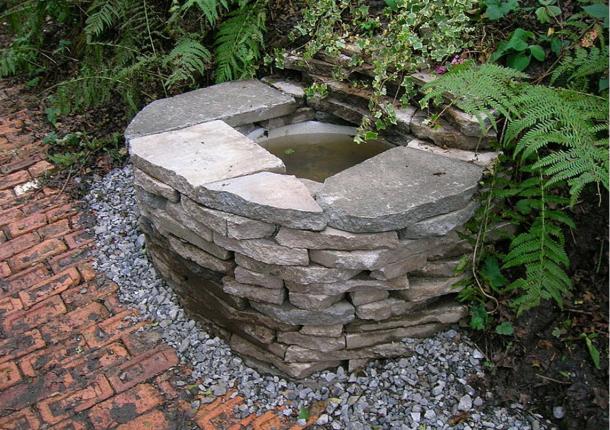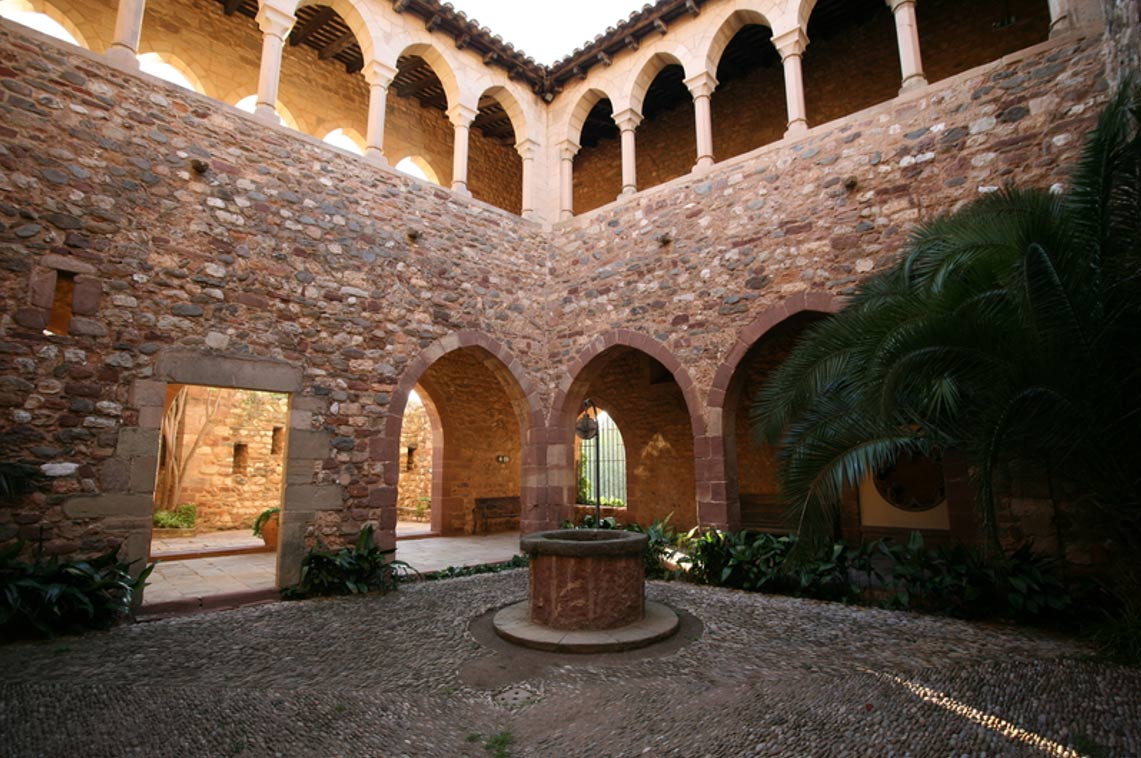The Ritual behind Wishing Wells: Buying Favors and Good Fortune
The modern Western world is familiar with the concept of wishing wells, or bodies of water in which currency, most commonly in the form of coin, is tossed with the intention of making a wish. Some towns even host a fountain in the town square or epicenter in which passersby drop coins in hopes that their desires will be fulfilled. While this practice is common knowledge, the origin of the tradition is not. In fact, when and where this practice began is somewhat unclear.
As with many traditions that predate recorded history, pinning down one particular event or origin related to the wishing well is difficult. Many ancient practices spanned more than one culture, varying according to the practicing people. But in regards to the phenomenon of the wishing well, there are undoubtedly age old customs that correlate to the tradition of wishing over sacred water.

The dark pools in the Luray Caverns are filled with coins and other tokens thrown in by visitors and hopeful wishers. ‘Wishing Well’ of Luray Caverns, Virginia, USA. Wikimedia Commons
Though the wishing well is considered to be a European tradition, it is important to understand the worldwide significance of clean water before the advent of indoor plumbing and water filtration.
Water is the source and sustenance of life. All major civilizations developed around a source of water, mostly fresh, so that it could be used and utilized for drinking and other essential day to day activities, such as agriculture. These large bodies of water were also key in successful trade and defense. On a smaller scale, clean water that emanated from springs or streams were also vital to local communities. Structures often came to be built around the source of this clean water to protect it from contaminates. These ‘wells’ often became a common meeting place for residents.

A Wishing Well in Barrmill, Scotland. Wikimedia Commons
Yet, the power of clean water went far beyond meeting the physical needs of its users. Many ancient cultures and religions ascribed magical qualities to clean water. In regards to views on morals, a shared view was that all earthly things—including, and often times expressly, mankind—were unclean. As a result of this view, the common belief that water could counter those inherent infirmities arose. Purification was thought to be achieved by means of a ritual cleansing, sometimes through so simple of an act as pouring water over a contaminated object.
MORE
- Ring of Skulls: Ancient and Modern Sacrifices to the Water Gods
- Maya Water Temple Complex discovered where ritual offerings were made to placate the Rain God
The Celts and Germanic peoples are often cited in reference to the tradition of wishing wells. These two groups, who are closely linked in origin, thought such waters had mystical powers and believed them to be guarded by spirits. These spirits were said to reside at the source of the water. Speaking something aloud over the source made it come to pass, if the spirits were thus inclined. Therefore, it became common practice to beseech the blessing of the well’s divinity or spirit by offering something in return. Patrons would sacrifice coins and other valuables in hopes that the spirit would look upon them in favor and grant their wishes.
But how, exactly, did this tradition start? Pliny the Younger wrote of it as early as the turn of the second century when he stated that, “Several separate springs...converge into a broad still pool. There the water, clear as glass, allows you to see gleaming pebbles on the bottom and the coins that people have thrown in....”

Wishing well, Hawaii Tropical Botanical Garden, Big Island. Joel Abroad/Flickr
Anthropologists at the University of California Irvine (UCI) point to early Celtic traditions. One such example involved patrons tossing coins into a famous well in Carrawburgh, Northumberland to appease Roman Britain and Celtic goddess Coventina. This nymph goddess is said to have been associated with childbirth and healing, and her well, the source of a spring, is the center of a small temple. Numerous coins, buttons, votive beads, glass pieces, and pottery, along with other items, have been discovered in the well, most from the time period of the reign of Gratian (407 C.E.).

Lyme Park Wishing Well. Cheshire, England. Andrew Gibson/Flickr
An interesting observation made by researchers at UCI is that the coins found on site were generally of little or no value as currency during their period of use, implying that the value of the coin did not correlate with the expected result. The discovery of other objects, such as buttons and pins, again reaffirm the belief that the value of the object did not coincide with the value of the wish or blessing being sought.
But is Coventina’s sanctuary the source of the wishing well tradition? Not likely.
MORE
- The sophisticated water technologies of the ancient Nabataeans
- The practice of sacrifice in Iron Age Britain
- Enormous 2,300-year-old Roman water basin unearthed in the heart of Rome
A story commonly cited in reference to this tradition is the legend of Mimir. Mimir was an Aesirian god also believed to be a water spirit. According to Norse tradition as narrated by the Eddas and the Volsung saga, Mimir resided by and guarded the Well of Wisdom. He drank from this well daily and was recorded to be “the wisest of the world’s beings.” The eldest Norse god, Odin, according to the text, was in need of the wisdom to save the world from destruction. He sought to drink from this well, but Mimir’s fee for a drink from the well was steep: the seeker’s right eye. Hesitantly, Odin made this sacrifice to receive a drink. It is said his eye was then tossed into the well so that others would see the price that must be paid.

A depiction of Mimir and Odin. The god Odin drinks from the well of wisdom. 1903. Public Domain
Mimir’s tale brings the sacrifice to yet another level, showing that the desire to attain a blessing did not stop with patrons offering physical possessions, but some form of human or animal sacrifice. In fact, several cultures, including Celtics, were known to make blood gifts to their deities, some including animal—even human—sacrifice.
While we may never know the exact origin of this customary practice, one thing is certain: It continues to go strong even in this modern era. It was reported in 2006 that tourists deposited just under 3 million pounds sterling per year into the “Fountain Money Mountain.” Are these well-wishers consciously praying to a guardian god when they toss in their monetary sacrifice? Would they be willing to spill their blood or sacrifice an eye to see the fruition of their desires? Again, not likely.

The elaborately constructed and carved Rani-ki-Vav, also known as the Queen’s Stepwell. B. Gagnon/Wikimedia Creative Commons
Featured image: Wishing well in a castle. Credit: Saravin | Dreamstime.com
References
Tabila, Lauren, James Green, Jonathan Kwok, Kara Thurn, Meagan McLaughlin. “Wishing Wells: The Practice of Buying Good Fortune.” University of California Irvine, Department of Anthropology. <http://www.anthropology.uci.edu/~wmmaurer/courses/anthro_money_2006/wishing.html>
Nemeton: The Sacred Grove. “Celtic Gods: The Brythonic goddesss, Coventina (Disappearing Memory, Memory of Snow).” <http://www.celtnet.org.uk/gods_c/coventina.html>
Norse Mythology for Smart People. <http://norse-mythology.org/gods-and-creatures/others/mimir/>
Colum, Padraic. The Children of Odin. 1920. <http://www.sacred-texts.com/neu/ice/coo/coo11.htm>
Stewart, Michele. “Water in Culture and Religion.” 2008. <http://www.ce.utexas.edu/prof/mckinney/ce397/Topics/Religion/Water_in_C&R.pdf>
Lovegrove, Chris. “Wishing Wells and Votive Offerings.” 1988. <http://people.bath.ac.uk/liskmj/living-spring/sourcearchive/fs8/fs8cl1.htm>
By E.C. Rammel


















Comments
Hello. And Bye.
Sound theory , silver is a antimicrobial,as is copper however, copper is poisonous if ingested.
One aspect of coins in water that was not discussed is the purifying qualities of silver, which is one reason that table ware was originally made of silver. Perhaps there was an actual benefit of throwing silver coins into a source of drinking water.
I agree with Justbod. Lakes, pools, streams, etc. were considered the entrence to the underworld and the gods of the underworld. So before people settled in the agricultural revolution - and thus before there were man made wells - there was already a tradition of making offerings of food, weapons, people (marsh bodies) and so on there.
I had always assumed the practice had simply devolved from the votive and sacrificial offerings made into water by our ancestors. Interesting to also hear about other possible sources for the practise.
It never ceases to amaze me how pervasive the practise is – how many places I have visited where every pool of water is filled with coins. I even visited a ruined castle recently and the ‘window-wells’ (I don’t know what else to call them!) which were inaccessible below the walkway, had had coins thrown into them. It seems we have a basic need to make offerings ‘in prayer’ to whatever deity or power we believe in. It seems to run very deep.
Interesting article – thank you!
Sculptures, carvings & artwork inspired by a love of history & nature: www.justbod.co.uk